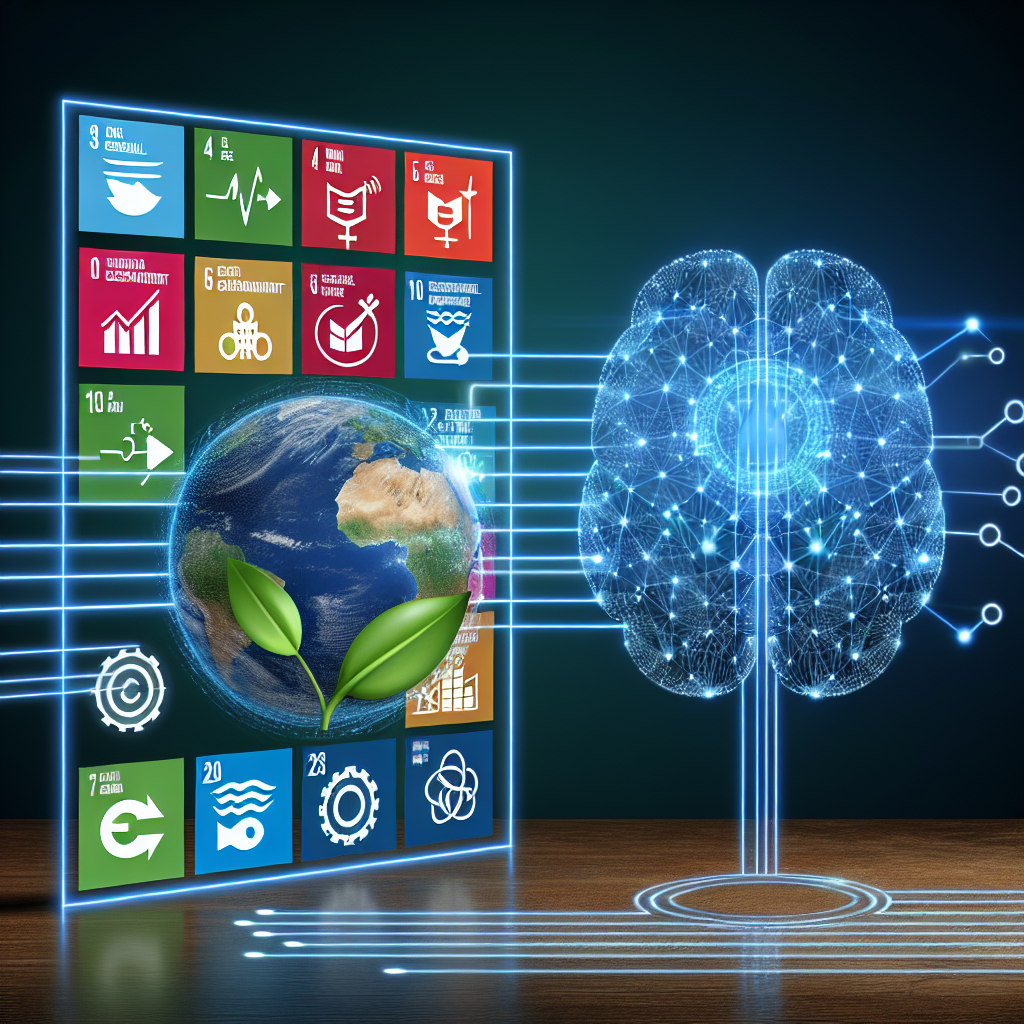Advancing Sustainable Development Goals with AI Technology
In recent years, there has been a growing recognition of the potential of artificial intelligence (AI) technology to help advance sustainable development goals (SDGs). AI has the ability to analyze vast amounts of data, identify patterns and trends, and make predictions that can inform policy decisions and drive progress towards achieving the SDGs. From climate change to poverty alleviation, AI is being used in a variety of ways to address some of the world’s most pressing challenges.
One of the key ways in which AI is being used to advance the SDGs is through data analysis. AI algorithms can process and analyze large amounts of data from a variety of sources, including satellite imagery, social media, and government reports, to identify trends and patterns that can inform policy decisions and drive progress towards the SDGs. For example, AI technology can be used to analyze satellite imagery to monitor deforestation rates, track changes in land use, and identify areas at risk of natural disasters. This information can then be used to inform conservation efforts, develop early warning systems, and allocate resources more effectively.
AI is also being used to address poverty and inequality by improving access to essential services such as healthcare and education. AI-powered chatbots, for example, are being used to provide information and support to people in remote or underserved communities who may not have access to traditional healthcare services. AI algorithms are also being used to personalize education and training programs, identify at-risk students, and provide targeted interventions to help them succeed. By harnessing the power of AI, organizations and governments can improve the quality and accessibility of essential services, helping to reduce poverty and inequality and advance the SDGs.
Another area where AI is making a significant impact is in climate change mitigation and adaptation. AI technology is being used to optimize energy consumption, improve the efficiency of renewable energy sources, and develop climate models that can help predict and mitigate the impacts of climate change. For example, AI algorithms can analyze energy consumption patterns in buildings and recommend ways to reduce waste and improve efficiency. AI-powered weather forecasting models can also help predict extreme weather events and inform disaster response efforts. By leveraging AI technology, organizations and governments can develop more sustainable and resilient infrastructure, reduce greenhouse gas emissions, and advance the SDGs related to climate action.
In addition to these examples, AI technology is being used in a variety of other ways to advance the SDGs. For example, AI-powered drones are being used to monitor wildlife populations, track illegal poaching activities, and protect endangered species. AI algorithms are also being used to analyze social media data to identify trends and sentiments related to public health issues, such as disease outbreaks and vaccine hesitancy. By harnessing the power of AI, organizations and governments can generate valuable insights, drive innovation, and develop more effective solutions to complex global challenges.
FAQs about Advancing Sustainable Development Goals with AI Technology
Q: How can AI technology help address climate change?
A: AI technology can help address climate change in a variety of ways, including optimizing energy consumption, improving the efficiency of renewable energy sources, and developing climate models that can help predict and mitigate the impacts of climate change. By analyzing data and identifying patterns, AI algorithms can help organizations and governments develop more sustainable and resilient infrastructure, reduce greenhouse gas emissions, and advance the SDGs related to climate action.
Q: How can AI technology be used to address poverty and inequality?
A: AI technology can be used to address poverty and inequality by improving access to essential services such as healthcare and education. AI-powered chatbots, for example, can provide information and support to people in remote or underserved communities who may not have access to traditional healthcare services. AI algorithms can also personalize education and training programs, identify at-risk students, and provide targeted interventions to help them succeed. By leveraging AI technology, organizations and governments can improve the quality and accessibility of essential services, helping to reduce poverty and inequality and advance the SDGs.
Q: How can AI technology help protect biodiversity and wildlife?
A: AI technology can help protect biodiversity and wildlife by monitoring wildlife populations, tracking illegal poaching activities, and protecting endangered species. AI-powered drones, for example, can be used to monitor wildlife populations from the air, track illegal poaching activities, and protect endangered species from harm. By analyzing data and identifying patterns, AI algorithms can help organizations and governments develop more effective strategies for protecting biodiversity and wildlife, advancing the SDGs related to life on land and life below water.
Q: What are some of the challenges associated with using AI technology to advance the SDGs?
A: While AI technology has the potential to help advance the SDGs, there are also some challenges associated with its use. These challenges include concerns about data privacy and security, bias in AI algorithms, and the potential for job displacement. Organizations and governments must be mindful of these challenges and take steps to address them, such as ensuring that data is collected and used ethically, monitoring AI algorithms for bias, and investing in workforce training and development to prepare for the impact of AI technology on jobs and employment.
In conclusion, AI technology has the potential to help advance sustainable development goals by analyzing data, identifying trends and patterns, and informing policy decisions that can drive progress towards achieving the SDGs. From addressing climate change to reducing poverty and inequality, AI is being used in a variety of ways to tackle some of the world’s most pressing challenges. By harnessing the power of AI, organizations and governments can generate valuable insights, drive innovation, and develop more effective solutions to complex global challenges, ultimately helping to create a more sustainable and equitable world.

